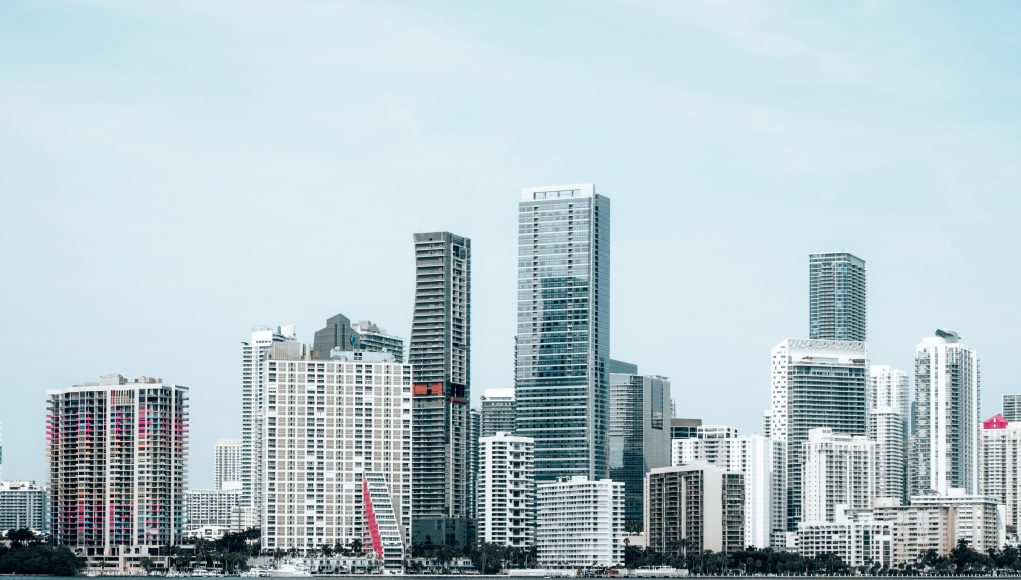Jessica Botero has been working for 14 years at Zyscovich Architects in downtown Miami. The company has 130 employees and, due to the COVID-19 pandemic, 80% of them work from home, where they can stay at least through the end of the year, she says. Only the receptionist and those who absolutely need to be present are required to show up every day at the Biscayne Boulevard headquarters.
“I have been in our company offices a few times and have seen a lot of restaurants and small businesses close,” said Botero, who works in her home in Miami Shores. “If there are no people working downtown, restaurants cannot sell their lunch menu.”
Botero and her firm illustrate the challenge downtown Miami’s stores and office towers face in recovering from the pandemic. Many workers have left the urban core and though they may be back, downtown streets will likely remain less than full for quite some time.
According to a survey by Colliers International, a net of almost 500,000 square feet of county office space was left unleased in the second quarter, which ended in June. The vacancy rate grew by 0.5% county-wide and, for class A space, is about twice as high downtown as elsewhere. Brickell vacancies stand at the country average.
Vacancies have likely grown in the last few months. And many businesses that remain in their spaces, like Zyscovich, are either sparsely populated or closed down completely.
“A lot of companies are probably not going to renew their leases,” says Eli Beracha, director of FIU’s Hollo School of Real Estate. “We already see some restaurants closing as well as some offices.”
Carlos Miro, who owns a specialized watch business located in the Seybold Jewelry Building on NE First Street, has seen his sales volume drop dramatically. His store is close to the courts, where many clients worked. But with many hearings online, they haven’t visited his store for months.
The lack of tourists has also impacted Miro’s business. Most of the clients used to be cruise line passengers visiting from the Port of Miami. Miro said that many of the stores in the Seybold building have been forced to close because of the current crisis.
Miro received a loan from the government to support his business during these trying times, but his budget is still very tight. He says he can continue to keep his business open for four more months with limitations. He needs new equipment, but cannot afford it right now.
“We don’t have tourists, we don’t have clients, we don’t have businesses open,” he says. “The jewelry business has dropped 80%. This building was busy with people all the time.”
Christina Crespi, executive director of the Miami Downtown Development Authority (DDA), said her organization has worked with key stakeholders throughout the community, including the City of Miami and FIU’s Chaplin School of Hospitality & Tourism Management, to help businesses in the district.
The DDA partnered with the South Beach Wine and Food Festival and FIU Chaplin School Hospitality Industry Relief Fund to support the downtown restaurants that have been impacted by COVID-19. They have already contributed more than $190,000 in grants to 78 downtown restaurants.
The DDA has also launched a microgrant program offering businesses within the district up to $1,250 towards rent, utilities, purchase of personal protective equipment PPE and social distancing tools.
Downtown Miami is a resilient community, Crespi says. “We came back from the Great Recession faster and stronger than anyone predicted and went on to experience a decade of historic growth and development,” she says. “More so than any other submarket in Miami-Dade, Downtown Miami will continue to be on the shortlist for new-to-market retail and office.”
FIU’s Beracha is optimistic that things will improve by this fall.
“I think that once elections get behind us and we’re hopefully going to have a vaccine that is approved for usage, that will give the green light for us to go back to work and people will go back to the offices,” he says.
This story is part of a collaboration between Miami Today and Florida International University’s Department of Journalism + Media.
































